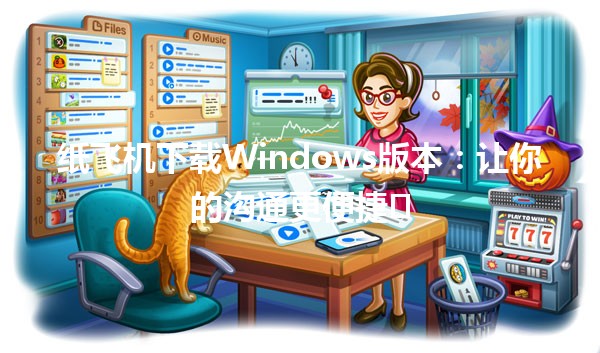Exiting Telegram Desktop: Tips and Tricks to Make the Process Smooth

In today’s digital landscape, messaging apps have become an essential part of communication, transcending geographical boundaries and allowing individuals to connect seamlessly. One of the most popular messaging platforms is Telegram, wellknown for its userfriendly interface, strong privacy features, and a multitude of channels and bots that extend its functionality. However, there are times when you might want to exit Telegram, whether it’s to take a break from social media, manage your digital footprint, or focus on your productivity without distractions. In this article, we will explore the different methods to exit Telegram on desktop, alongside some insights into managing your communication habits.
Understanding Telegram Desktop

Before diving into the exit procedures, let's briefly outline what Telegram Desktop is and its significance in the realm of messaging apps. Telegram Desktop allows users to access their Telegram accounts directly from their computers, providing an alternative to mobile devices. This feature enhances user experience by offering a larger screen, better typing capabilities, and access to additional functionalities that may not be available on mobile devices.
Telegram’s interface is designed to be straightforward and intuitive, making it easy for both new and seasoned users to navigate through chats, settings, and media. It supports various platforms, including Windows, macOS, and Linux, thus catering to a diverse user base.
Reasons for Exiting Telegram Desktop
There are various reasons you might consider exiting Telegram Desktop:
Understanding these reasons can help you make an informed decision about your communication habits and the use of messaging apps.
How to Exit Telegram Desktop
Now, let’s delve into the practical aspects of exiting Telegram Desktop. There are a few different methods to consider, depending on whether you want a temporary exit or a more permanent solution.
Temporary Exit
If you merely intend to take a break from Telegram but don’t want to delete your account, consider the following methods for a temporary exit:
Logging out of your Telegram Desktop account is a simple and effective method. Here’s how to do it:
Step 1: Open Telegram Desktop.
Step 2: Click on the three horizontal lines in the top left corner to open the menu.
Step 3: Scroll down and click on `Settings`.
Step 4: Click on `Log out` at the bottom of the Settings page.
This action will take you to the login screen. You can easily log back in at any time with your credentials, and your messages and media will remain intact.
If you want to remain logged into your account but reduce distractions, you can mute notifications temporarily:
Step 1: Open your chats on Telegram Desktop.
Step 2: Rightclick on the chat you wish to mute.
Step 3: Select `Mute notifications` and choose a duration (e.g., 1 hour, 8 hours, or indefinitely).
Muting notifications allows you to step back from conversations without entirely committing to exiting the app.
Permanent Exit
If you've made the decision to permanently exit Telegram, follow these steps:
If you feel that exiting Telegram is a necessary step for your digital wellbeing, deleting your account may be the solution. Here’s how:
Step 1: Open your web browser and navigate to the Telegram account deletion page at my.telegram.org.
Step 2: Log in using your phone number.
Step 3: Once logged in, click on `Delete Account`.
Step 4: Follow the onscreen instructions to confirm your account deletion.
Bear in mind that deleting your account is irreversible. You will lose your messages, media, and contact list. It’s essential to consider whether this is the right choice for you.
If you want to remove Telegram from your computer, uninstalling the application may be your preferred method. Depending on your operating system, here’s how to do it:
Windows:
Open `Control Panel`.
Select `Programs` > `Uninstall a program`.
d Telegram in the list, rightclick, and select `Uninstall`.
macOS:
Open `der`.
Navigate to the `Applications` folder.
Locate Telegram, rightclick, and select `Move to Trash`.
Linux:
The process varies between distributions. Generally, you can use the package manager (like `aptget` or `snap`) to remove Telegram.
Uninstalling the application from your computer may give you the break you need while allowing for the option to reinstall later if you choose.
Managing Communication Habits PostExit
After exiting Telegram, it’s essential to reflect on your communication habits. Whether you took a temporary break or deleted your account, consider the following tips to improve your overall digital experience:
If you still wish to stay connective, consider exploring alternative messaging platforms that may offer a different experience. Options like Signal, Discord, or WhatsApp may suit your needs better, depending on your requirements for privacy and functionality.
Establish clear boundaries with technology to manage digital distraction. This may involve designating specific times for checking messages or social media, or utilizing apps designed to minimize screen time.
Redirect your time and energy into offline hobbies or social activities. Reading, exercising, or spending quality time with family and friends can enhance personal fulfillment outside the confines of messaging apps.
Incorporating mindfulness practices into your daily routine can help mitigate stress and improve focus. Activities like meditation, yoga, or journaling can foster a balanced relationship with technology.
Consider planning regular digital detoxes where you consciously disconnect from messaging apps and social media. This practice can help reset your relationship with technology and improve mental health.
Exiting Telegram Desktop, whether temporarily or permanently, can provide you with muchneeded clarity and focus in a world full of digital distractions. Whether you choose to log out, mute notifications, or delete your account, the key is to remain mindful of your communication habits. By considering your needs and the impact of technology on your life, you can take control of your digital experience and make thoughtful decisions about how and when to connect with others.
Remember to embrace a balanced approach to technology use, allowing for a healthier relationship with your digital devices while maintaining connections that matter.
Other News

Telegram机器人的统计功能 📊🤖

纸飞机下载Windows版本:让你的沟通更便捷✈️💬

Telegram VPN下載的魅力與安全性
